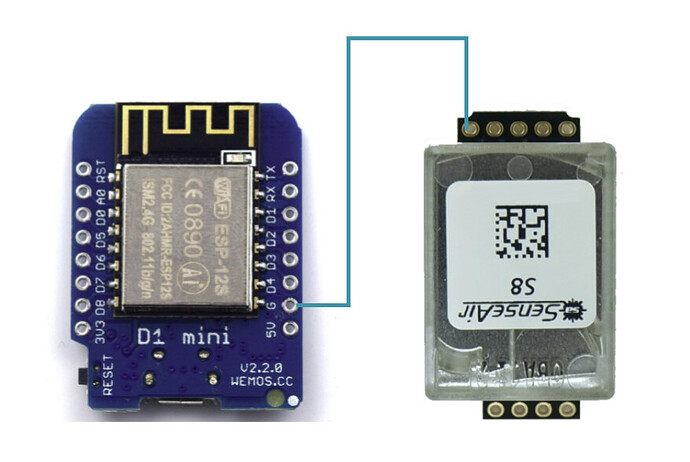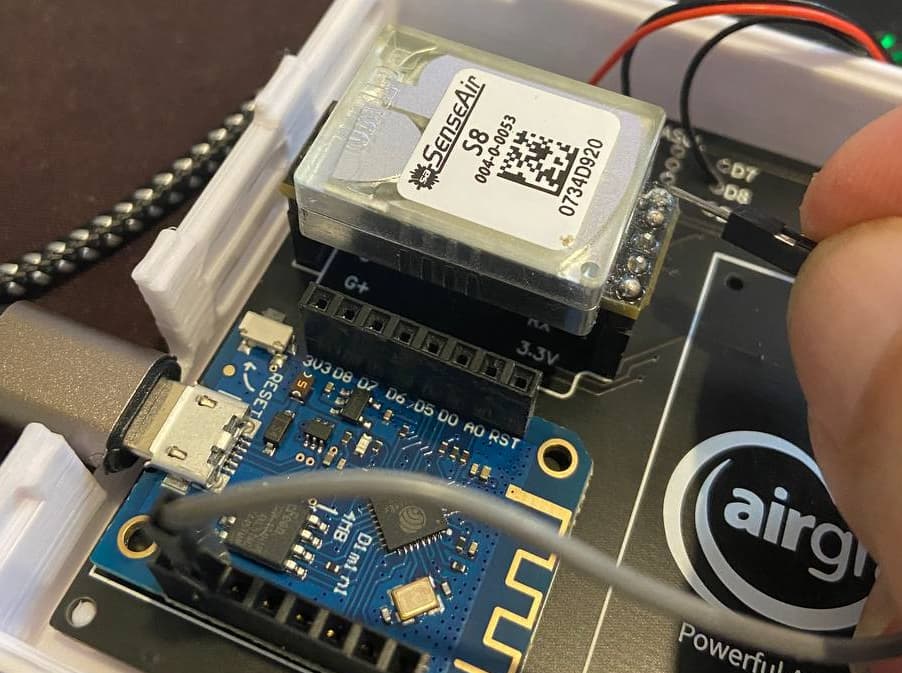My Senseair somehow managed to get miscalibrated - values when taken outside were hovering around 1400 and inside were in the 1700s. I didn’t have much luck with the manual calibration using the Ground pin, what did work is the manual calibration sketch example from the S8_UART library. (The RX and TX pin for the AirGradient are 2,0).
/******************************
To do a manual calibration
******************************/
#include <Arduino.h>
#include "s8_uart.h"
/* BEGIN CONFIGURATION */
#define DEBUG_BAUDRATE 115200
#if (defined USE_SOFTWARE_SERIAL || defined ARDUINO_ARCH_RP2040)
#define S8_RX_PIN 2 // Rx pin which the S8 Tx pin is attached to (change if it is needed)
#define S8_TX_PIN 0 // Tx pin which the S8 Rx pin is attached to (change if it is needed)
#else
#define S8_UART_PORT 1 // Change UART port if it is needed
#endif
#define COUNTDOWN (6*60) // Time in seconds to wait outside before a manual calibration starts
/* END CONFIGURATION */
#ifdef USE_SOFTWARE_SERIAL
SoftwareSerial S8_serial(S8_RX_PIN, S8_TX_PIN);
#else
#if defined(ARDUINO_ARCH_RP2040)
REDIRECT_STDOUT_TO(Serial) // to use printf (Serial.printf not supported)
UART S8_serial(S8_TX_PIN, S8_RX_PIN, NC, NC);
#else
HardwareSerial S8_serial(S8_UART_PORT);
#endif
#endif
S8_UART *sensor_S8;
S8_sensor sensor;
void setup() {
// Configure serial port, we need it for debug
Serial.begin(DEBUG_BAUDRATE);
// Wait port is open or timeout
int i = 0;
while (!Serial && i < 50) {
delay(10);
i++;
}
// First message, we are alive
Serial.println("");
Serial.println("Init");
// Initialize S8 sensor
S8_serial.begin(S8_BAUDRATE);
sensor_S8 = new S8_UART(S8_serial);
// Check if S8 is available
sensor_S8->get_firmware_version(sensor.firm_version);
int len = strlen(sensor.firm_version);
if (len == 0) {
Serial.println("SenseAir S8 CO2 sensor not found!");
while (1) { delay(1); };
}
// Show basic S8 sensor info
Serial.println(">>> SenseAir S8 NDIR CO2 sensor <<<");
printf("Firmware version: %s\n", sensor.firm_version);
sensor.sensor_id = sensor_S8->get_sensor_ID();
Serial.print("Sensor ID: 0x"); printIntToHex(sensor.sensor_id, 4); Serial.println("");
// Countdown waiting outside
Serial.println("Now, you put the sensor outside and wait.");
Serial.println("Countdown begins...");
unsigned int seconds = COUNTDOWN;
while (seconds > 0) {
printf("Time remaining: %d minutes %d seconds\n", seconds / 60, seconds % 60);
delay(1000);
seconds--;
}
Serial.println("Time reamining: 0 minutes 0 seconds");
// Start manual calibration
Serial.println("Starting manual calibration...");
if (!sensor_S8->manual_calibration()) {
Serial.println("Error setting manual calibration!");
while (1) { delay(10); }
}
}
void loop() {
static unsigned int elapsed = 0;
// Wait 2 sec lamp cycle
delay(2000);
elapsed += 2;
// Check if background calibration is finished
sensor.ack = sensor_S8->get_acknowledgement();
if (sensor.ack & S8_MASK_CO2_BACKGROUND_CALIBRATION) {
printf("Manual calibration is finished. Elapsed: %u seconds\n", elapsed);
while (1) { delay(10); }
} else {
Serial.println("Doing manual calibration...");
}
}
I plugged the USB into a laptop and took the sensor outside, the serial showed a 6 minute countdown at the end of which the sensor calibrated.

